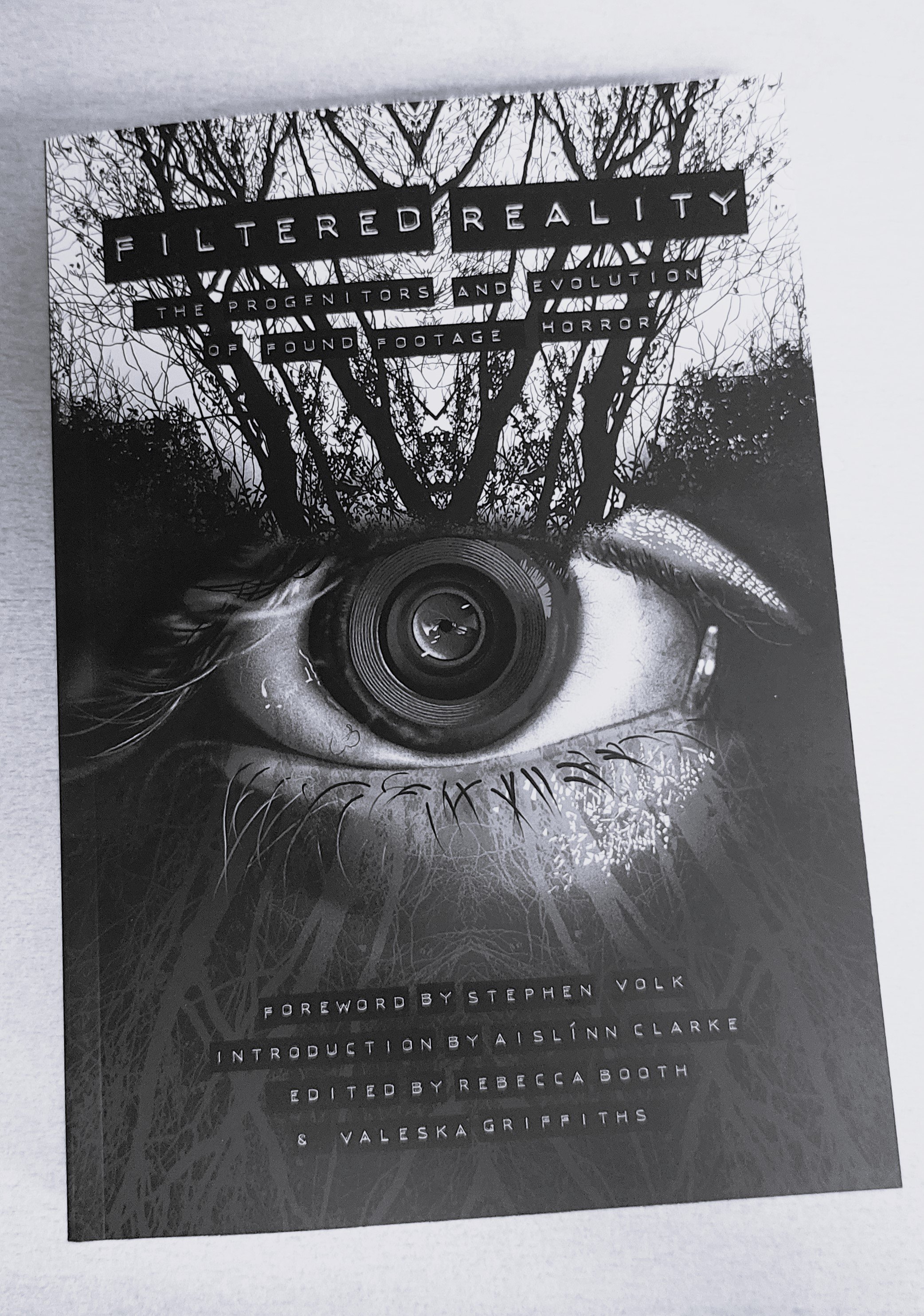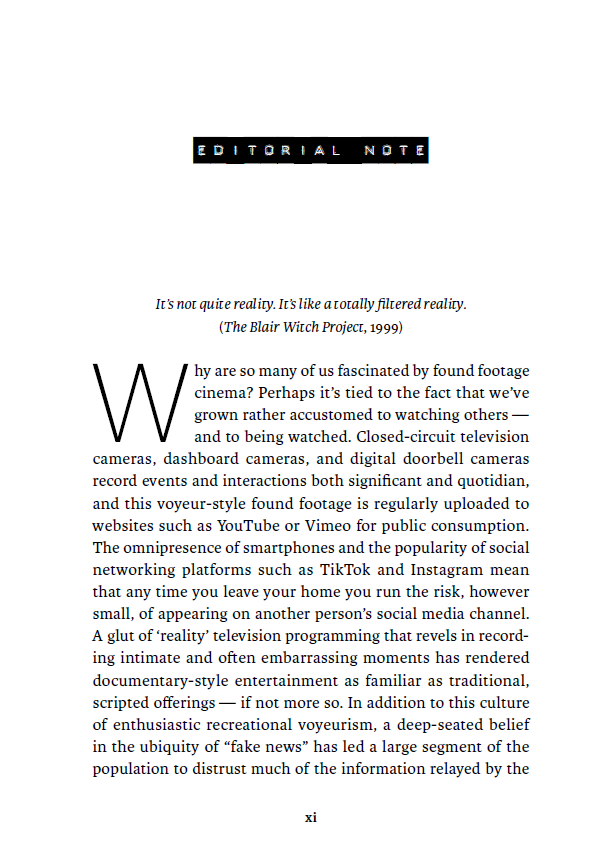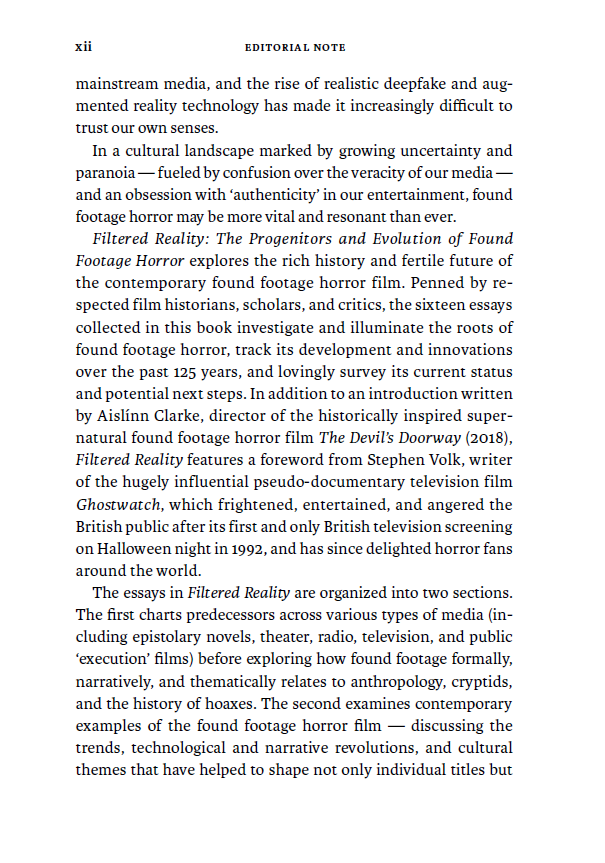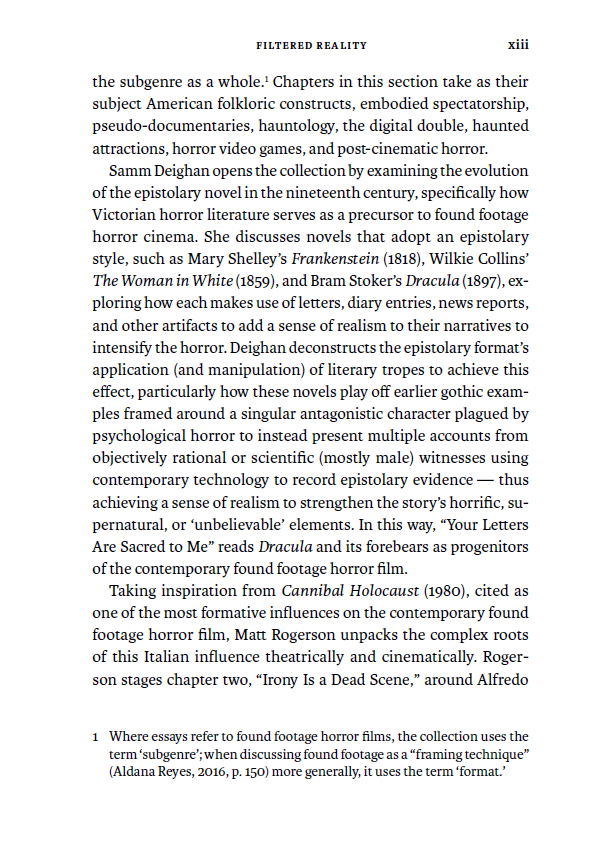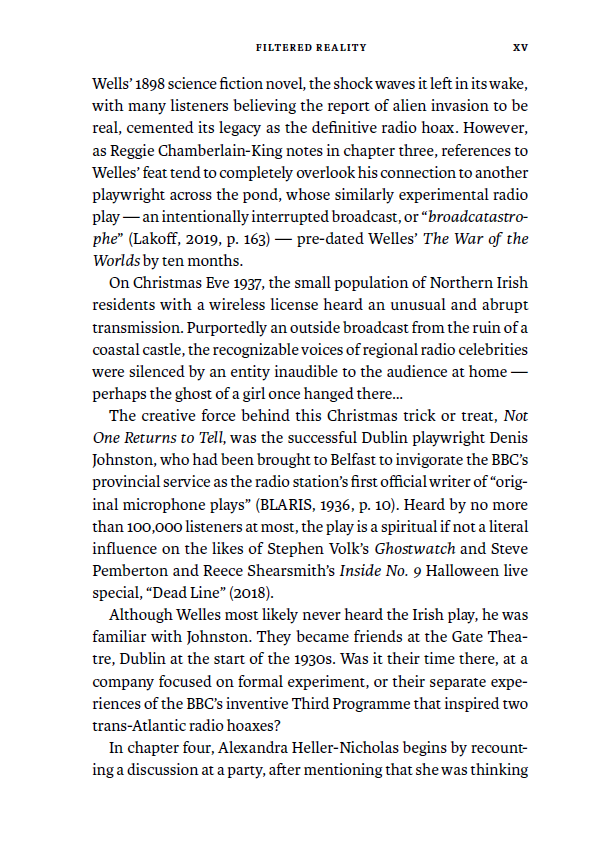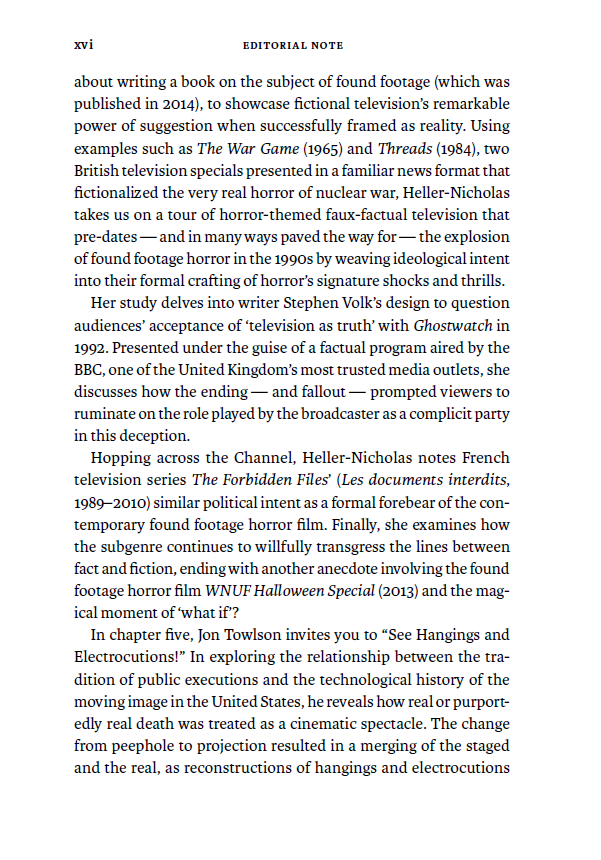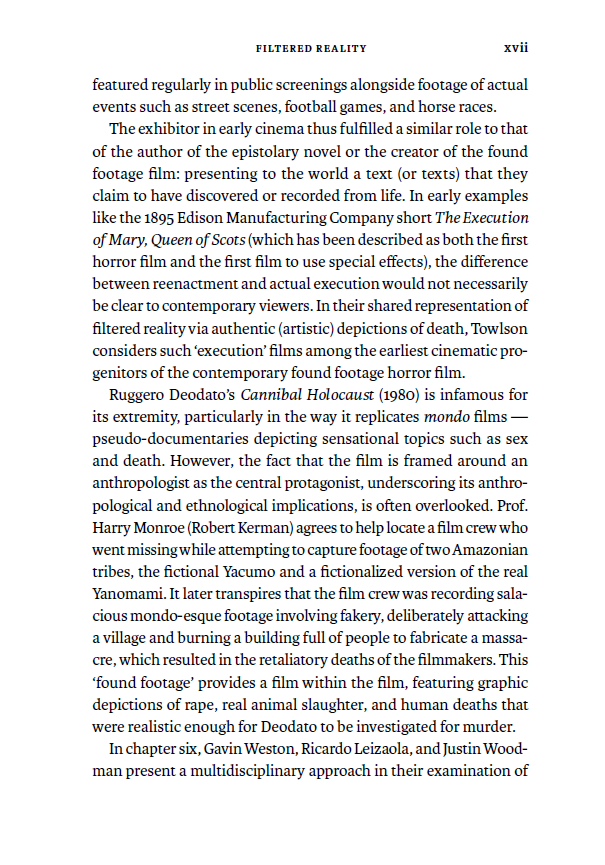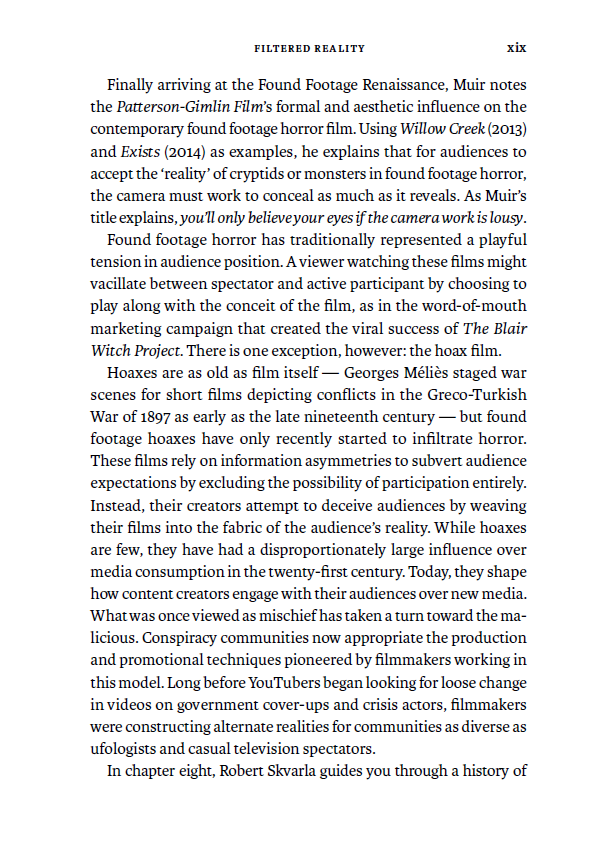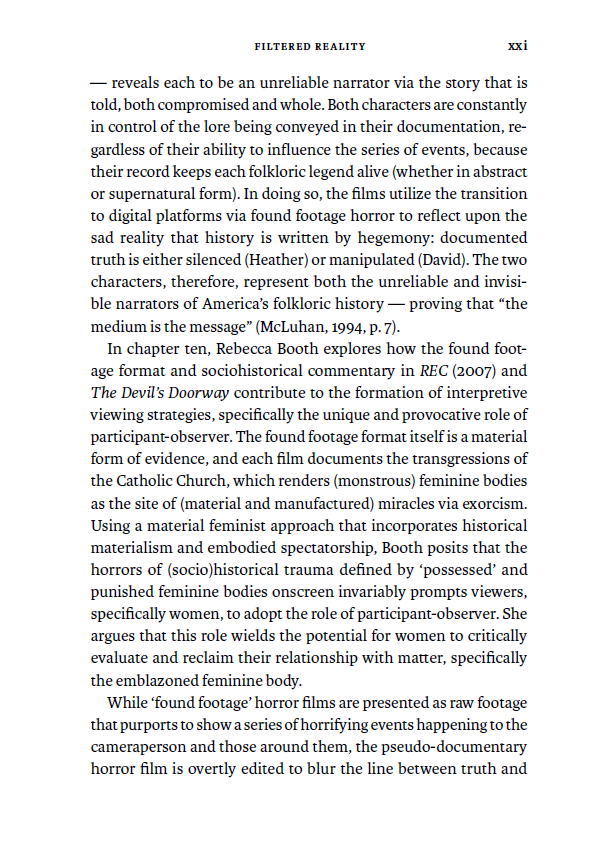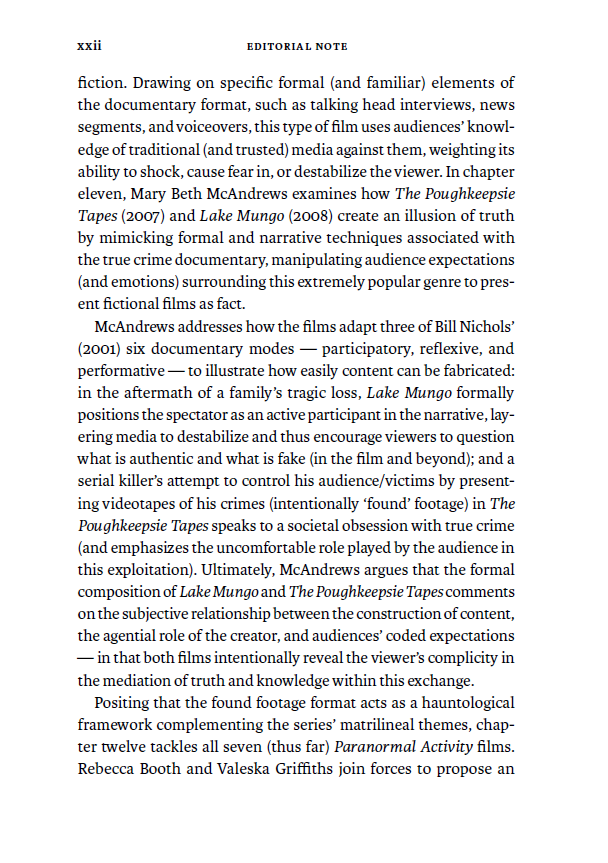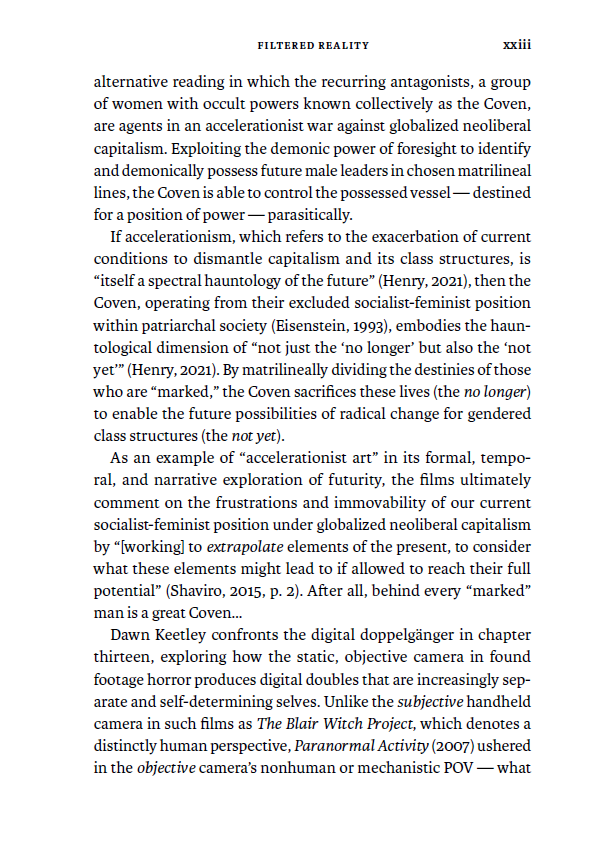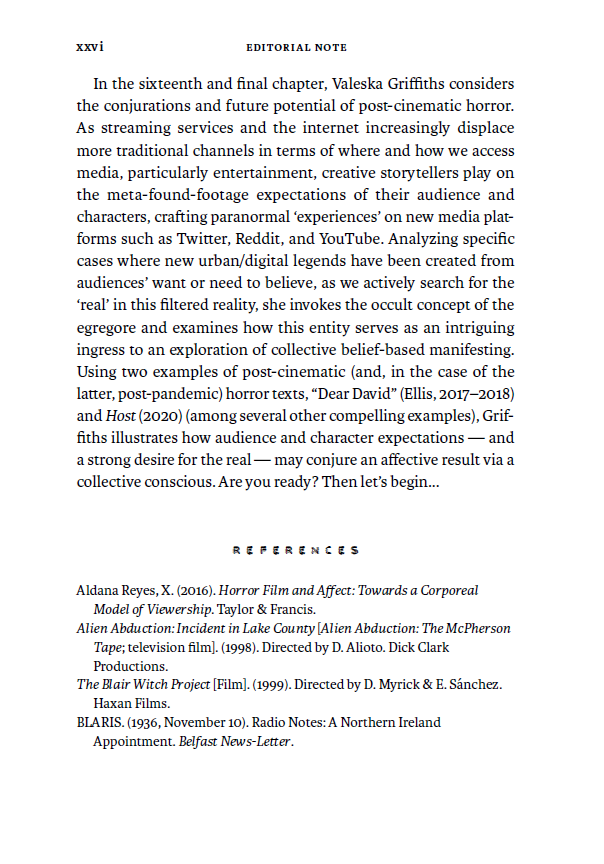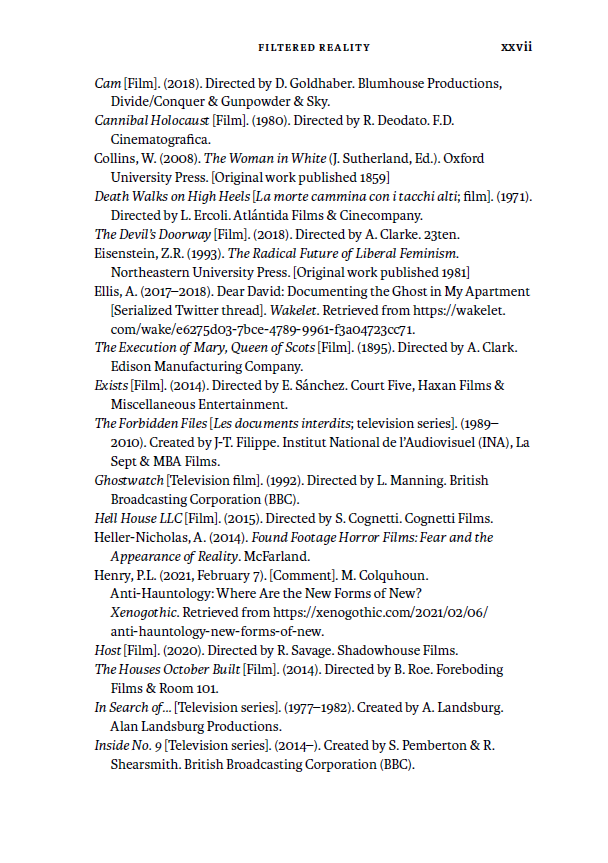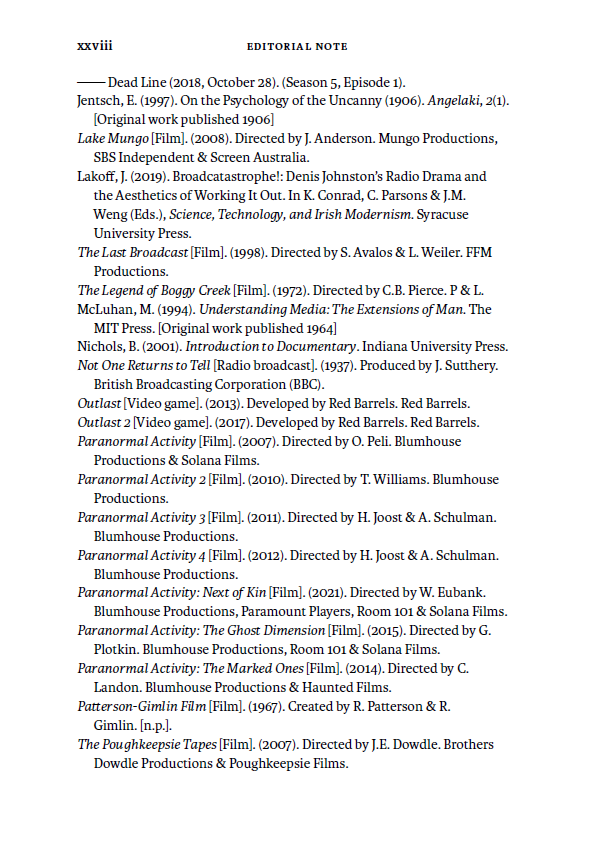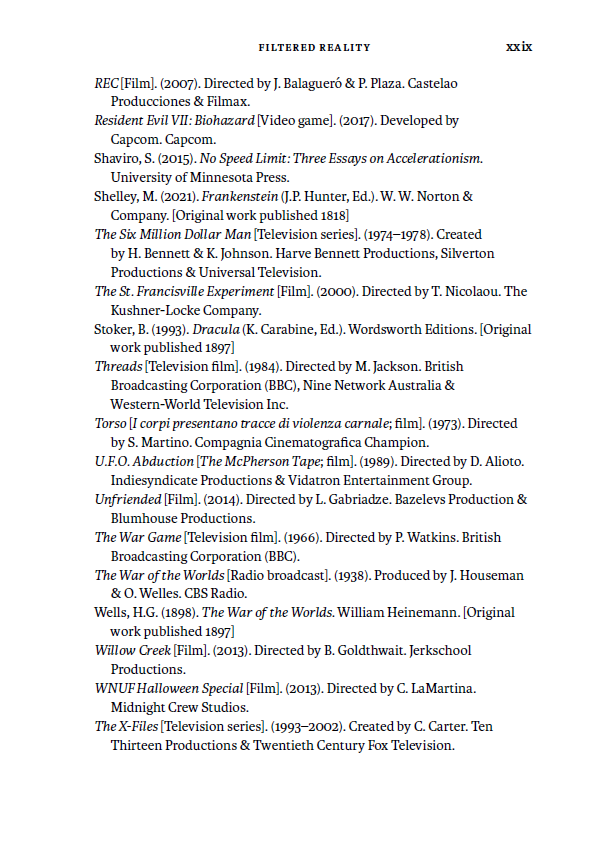Filtered Reality: The Progenitors and Evolution of Found Footage Horror
Filtered Reality: The Progenitors and Evolution of Found Footage Horror is a collection of sixteen essays from leading academics and writers exploring the genesis and development of the contemporary found footage horror film.
Featuring a foreword from Stephen Volk (Ghostwatch) and an introduction from Aislínn Clarke (The Devil’s Doorway), the book delves into the formal, stylistic, and technological influences that have shaped and revitalized this unsettling subgenre before charting its continuing evolution in our increasingly digital age.
Divided into two sections — Progenitors and Evolution — its sixteen chapters trace the genesis of the contemporary found footage horror film through multiple lenses, including:
—epistolary Victorian horror novels (Dracula) to Italian Grand-Guignol and giallo films (Torso);
—anthropology in the mondo film (Cannibal Holocaust) to the history of hoaxes (The McPherson Tapes);
—and digital folklore (The Blair Witch Project) to post-cinematic horror (Host) — and what lies beyond…
Contents
Foreword
by Stephen Volk
Introduction
Hex, Lies and Videotape: The magic of found footage film
by Aislínn Clarke
Progenitors
Evolution
“Your Letters Are Sacred to Me”: Dracula (1897) and the Epistolary Horror Novel
by Samm Deighan
“The medium is the message”: The Evolution of American Folklore Through Found Footage in The Last Broadcast (1998) and The Blair Witch Project (1999)
by Jessica Rose
Irony Is a Dead Scene: Audience Position and the Pursuit of Dramatic Irony in La Compagnia del Grand-Guignol, the Giallo Film and Found Footage horror
by Matt Rogerson
Emblazoned Eve: embodied Spectatorship, material feminism and Monstrous Religiosity in REC (2007) and The Devil’s Doorway (2018)
by Rebecca Booth
The Spirit at One’s Elbow: Denis Johnston, Orson Welles and interrupted radio
by Reggie Chamberlain-King
Fact or Fiction: Layering Media to Construct the Illusion of ‘True’ Crime in The Poughkeepsie Tapes (2007) and Lake Mungo (2008)
by Mary Beth McAndrews
Forbidden Files and Ghostwatching: Television, Truth and Transgression
by Alexandra Heller-Nicholas
Behind every “marked” man is a great coven: hauntology. matrilineality and the accelerationist specter of becoming in the paranormal activity series
by Rebecca Booth and Valeska Griffiths
“See Hangings and Electrocutions”: Early ‘Execution’ Films as Progenitors of Found Footage Horror
by Jon Towlson
The Mechanical Uncanny: Social Media and Digital Doubles in Unfriended (2014) and Cam (2018)
by Dawn Keetley
Cannibalizing Ethnographic Film: Anthropology’s Complicated Relationship with Found Footage Horror
by Gavin Weston, Ricardo Leizaola, and Justin Woodman
Welcome to Hell (House): Haunted Attractions and the Culture of Excess in The Houses October Built (2014) and Hell House LLC (2015)
by Peter Turner
You’ll Only Believe Your Eyes if the Camera Work is Lousy: A Survey of Found Footage Bigfoot
by John Kenneth Muir
Fear and the Ludic Subject: Phenomenology, the Body and Horror Video Games
by Daniel Vella
Infopocalypse Now: Hoaxing as Social Disruption in The McPherson Tapes and Beyond
by Rob Skvarla
Screaming Services: The Audience, the Egregore and Post-Cinematic Horror in “Dear David” (2017-2018) and Host (2020)
by Valeska Griffiths

